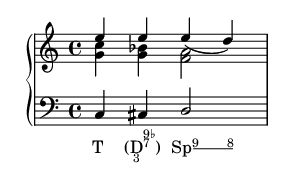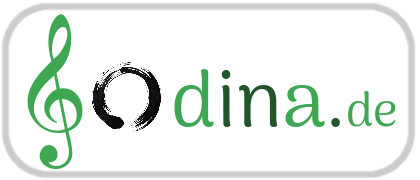← LilyPond, LilyPond Snippets and the GPL: About some bad side effects. | The German Corona Warn App as Open Source Software →
Harmonyli.ly – Harmonieanalysen für LilyPond
There was a gap: The extraordinary and marvelous music notation software LilyPond could not adequately deal with harmony analysis symbols. As a last consequence, musicologists could not really use it. But the gap was closed – by harmonyli.ly. Here comes a very first introduction
What it is:
harmonyli.ly is a LilyPond library for integrating harmony analysis symbols into a score. It can provide the symbols of the scale step theory as well as the more complex symbols of the functional harmony theory.
Where you can get it:
harmonyli.ly is offered as a Github repository: either you clone the repository or you download it as zip file.
How you integrate it:
Actually, you need only the file
harmonyli.lyfrom the package harmonyli.ly: copy the file to the place from which you want to include it into your LilyPond files.
How you use it:
You need four steps for using harmonyli.ly successfully:
- At first you write your score.
- Then you include harmonyli.ly file on top of the score section.
- Below the voice to which you want to bind your analysis, you insert a lyric section.
- And into this lyric section you write your analysis symbols.
How it looks:
\version "2.18.2"
\include "harmonyli.ly"
analysis = \lyricmode {
\markup \setHas "T" #'()
\markup \setImHas "D" #'(("B"."3")("a" . "7")("b" . "9♭"))
\initTextSpan " "
\markup \openZoomRow "Sp" #'(("a"."9"))
\startTextSpan
\markup \expZoomRow #'(("a"."8"))
\stopTextSpan
}
\score {
\new GrandStaff <<
\new Staff << \clef treble \key c \major \time 4/4
\new Voice = "top" { \stemUp e''4 e'' e''( d'') }
\new Voice = "middle" { \stemDown 4 4 2
}
>>
\new Staff << \clef bass \key c \major \time 4/4
\new Voice = "down" { \stemUp c4 cis4 d2 }
\new NullVoice = "rhythm" { \stemDown c,4 c,4 c,4 c,4 }
\new Lyrics \lyricsto "rhythm" {\analysis}
>>
>>
\layout {
\context {
\Score \override SpacingSpanner.base-shortest-duration = #(ly:make-moment 1/32)
}
\context {
\Lyrics \consists "Text_spanner_engraver"
}
}
} What it provides:

How one can learn it:
- The best method to become familiar with harmonyli.ly should be the reading of the harmonyli.ly tutorial. Beside the online version, you get an offline version as part of the harmonyli.ly repository.
- Additionally, the harmonyli.ly repository provides example files which can be studied in Frescobaldi or compiled by the commands
make example.pngresp.make examples.pdf. The code of these examples shows, how harmonyli.ly works.- Finally, the harmonyli.ly repository contains also all LaTeX sources for compiling the pdf version of the tutorial: change into
docand typemakeif you want to recompile it. With the help of these files you will be enabled to embed analyzed examples into your scientific texts.- The state of the art to deal with LaTeX and music is described in the German eBook “Musikwissenschaft und LaTeX”. But there exists at least an English summary.
- Last, but not least harmonyli.ly has its own project page, which also points to current events.
What you may do:
- harmonyli.ly itself is licensed under two licenses: feel free to use it under the terms of the MIT-license or under the terms of the GPLv3.
- The examples are distributed under the terms of the MIT license.
- The tutorial is published under the Creative Commons License CC-BY-SA.
For clarifiying the details, take a look at the compliance files in the repository.

